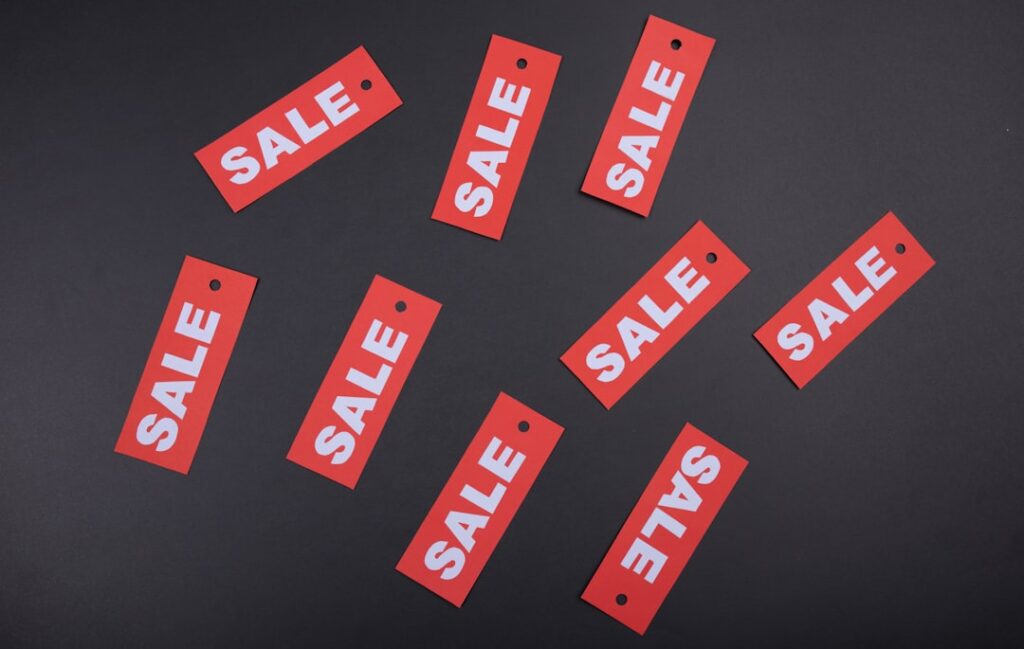Sell on eBay: 2024 Beginner’s Guide & Pro Tips
1. Prepare Your Items for Sale
1.1. Research Your Item’s Value and Demand
Before listing, determine what similar items have recently sold for on eBay. Go to eBay.com, type your item’s name into the search bar, and then on the left-hand filter menu (or by clicking “All Filters” and scrolling down), select “Sold Items” and “Completed Items.” This will show you the actual prices buyers paid, not just what sellers are asking. Pay attention to condition, included accessories, and shipping costs to gauge a realistic selling price. This research also helps you see if there’s a demand for your specific item.
1.2. Clean and Photograph Your Item Professionally
Thoroughly clean your item. Remove dust, fingerprints, and any smudges. For electronics, wipe down screens and casings. For clothing, ensure it’s laundered, ironed, and free of wrinkles. Take high-quality photos in good, natural lighting. Use a plain, neutral background (a white sheet or wall works well). Take multiple angles: front, back, sides, top, bottom, and close-ups of any unique features, labels, or imperfections. Aim for at least 5-7 clear photos. eBay allows up to 24 photos per listing, so don’t be shy. The first photo is your primary thumbnail, so make it the most appealing.
2. Create Your eBay Listing
2.1. Choose the Right Listing Format and Category
When creating your listing, you’ll choose between “Auction” and “Buy It Now.” Auctions are good for unique, hard-to-price, or high-demand items where bidding wars might drive up the price. Set a realistic starting bid and an optional reserve price if you have a minimum you’re willing to accept. “Buy It Now” is ideal for common items with established market values, or if you want a quick sale at a fixed price. You can also combine them using “Buy It Now” with “Best Offer.” Select the most specific and accurate category for your item. For example, instead of just “Electronics,” go to “Electronics > Cell Phones & Accessories > Cell Phones & Smartphones.” This helps buyers find your item more easily.
2.2. Write a Compelling Title and Detailed Description
Your title is crucial for search visibility. Include relevant keywords that buyers would use to search for your item. Be specific: “Apple iPhone 13 Pro Max 256GB Sierra Blue Unlocked Excellent Condition” is better than “iPhone for sale.” Use up to 80 characters. In the description, provide all necessary details. Start with key features, then describe the item’s condition (new, used, excellent, good, fair, defects), including any flaws or imperfections honestly. List included accessories, dimensions, and any relevant technical specifications. Use bullet points for readability. Be transparent; over-describing flaws can prevent returns later.
3. Manage Your Listing and Sales
3.1. Set Up Shipping Options and Costs
Determine your shipping strategy. You can offer “Calculated Shipping” where eBay calculates the cost based on the buyer’s location, your package weight/dimensions, and the chosen service (USPS Priority Mail, FedEx Ground, etc.). Or, offer “Flat Rate Shipping” where you charge a fixed amount to all buyers. Consider offering “Free Shipping” as it often attracts more buyers, but remember to factor the shipping cost into your item’s price. Always specify handling time (e.g., 1 business day) and consider offering international shipping if you’re comfortable with the added complexity. Clearly state your return policy (e.g., 30-day returns, buyer pays return shipping).
3.2. Respond to Buyer Questions and Offers
Monitor your eBay messages daily. Promptly respond to any questions from potential buyers. Quick and helpful responses can increase buyer confidence and lead to a sale. If you’ve enabled “Best Offer,” review offers as they come in. You can accept the offer, decline it, or make a counter-offer. Be prepared to negotiate slightly, but don’t accept offers that are too low and would result in a loss after fees and shipping. Timely communication is key to good customer service and positive feedback.
4. Fulfill Your Orders and Get Paid
4.1. Package Your Item Securely and Ship Promptly
Once an item sells, package it carefully. Use appropriate-sized boxes, plenty of bubble wrap, packing peanuts, or crumpled paper to prevent movement during transit. Fragile items require extra cushioning. Print your shipping label directly through eBay (this often provides a discount and automatically uploads tracking information). Confirm the buyer’s address. Ship the item within your stated handling time (e.g., 1 business day). Providing tracking information is crucial for both you and the buyer, and it protects you in case of a dispute.
4.2. Understand eBay’s Payment Processing and Fees
eBay manages payments through “Managed Payments,” which means buyers pay eBay directly, and eBay then disburses the funds to your linked bank account. This typically takes 1-3 business days after the buyer pays. eBay charges a Final Value Fee (FVF) on the total sale amount (item price + shipping + sales tax), which varies by category but is generally around 12.9% for most items, plus a fixed $0.30 per order. There may also be fees for optional listing upgrades (e.g., subtitles, bold text). Review eBay’s fee structure on their website to understand the costs involved and factor them into your pricing strategy.
FAQs
Q1: How do I know if I need to charge sales tax?
A1: As of 2024, eBay automatically calculates and collects sales tax from buyers based on their shipping address and remits it to the appropriate state tax authorities. You, as the seller, do not need to worry about calculating or remitting sales tax for most transactions on eBay.
Q2: What should I do if a buyer claims an item wasn’t received, but tracking shows it was delivered?
A2: First, politely ask the buyer to check with family members, neighbors, or their local post office. Provide them with the tracking number. If the issue persists, and tracking clearly shows “Delivered” to the correct address, you are generally protected by eBay’s Seller Protection Policy. You might instruct them to open an “Item Not Received” case, and eBay will review the tracking information, often siding with the seller if delivery is confirmed. You are not typically required to refund in such cases, but good customer service might involve offering to help them contact the carrier.
Q3: Can I sell internationally on eBay?
A3: Yes, you can. When creating your listing, you can select international shipping options. The easiest way for beginners is to use eBay’s Global Shipping Program (GSP). With GSP, you ship the item to a domestic eBay shipping center, and they handle all the international shipping, customs forms, and duties. This simplifies the process and protects you from international shipping issues once it reaches the GSP hub.
Q4: What if a buyer wants to return an item?
A4: Your return policy (stated in your listing) will dictate the process. If you accept returns, the buyer opens a return request through eBay. If the item is returned due to “Not as Described” (e.g., damaged, wrong item), you are generally responsible for return shipping costs and a full refund. If it’s a “buyer’s remorse” return (e.g., changed mind, doesn’t fit) and your policy allows it, the buyer typically pays return shipping, and you refund the item price upon safe receipt. Always inspect the returned item before issuing a refund.




